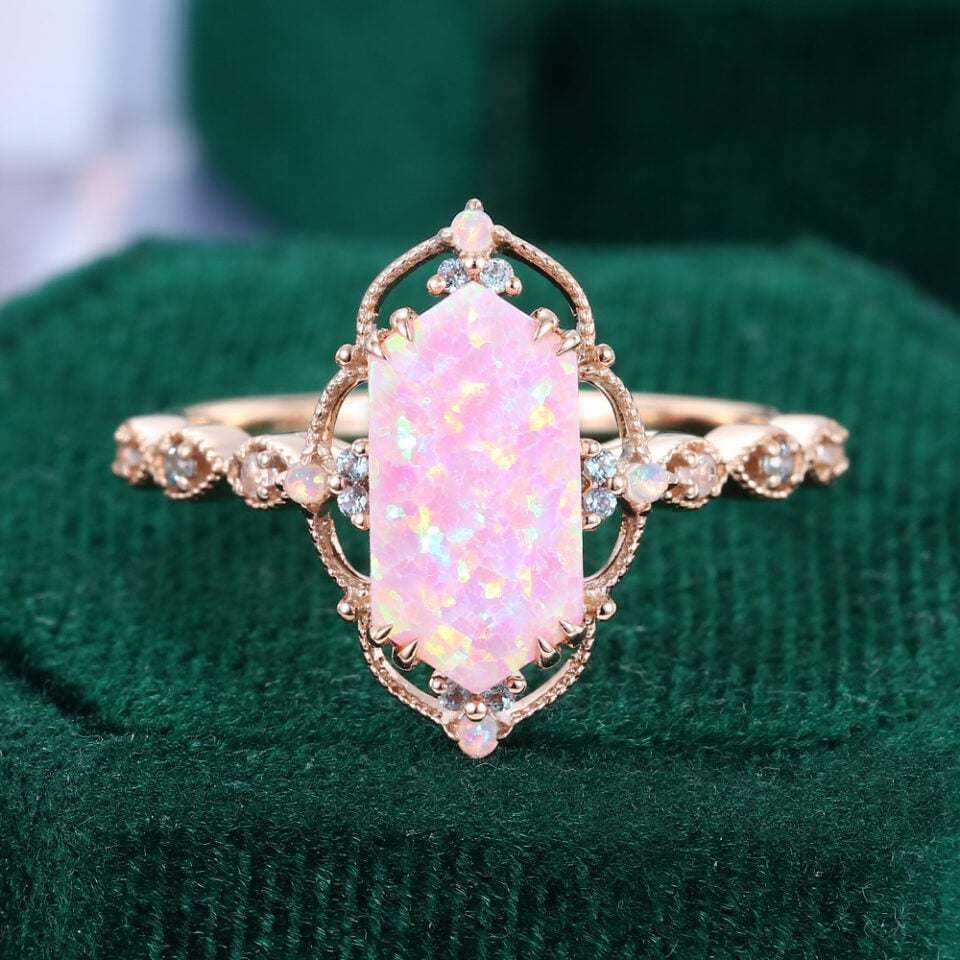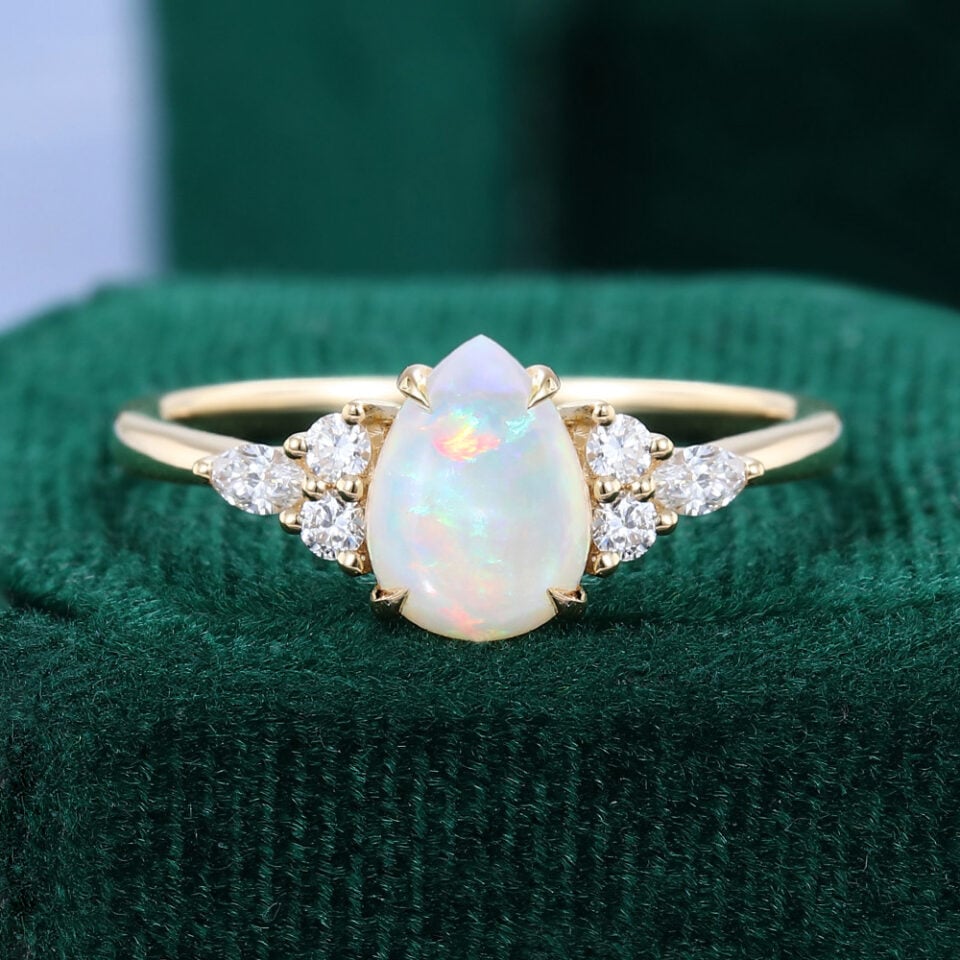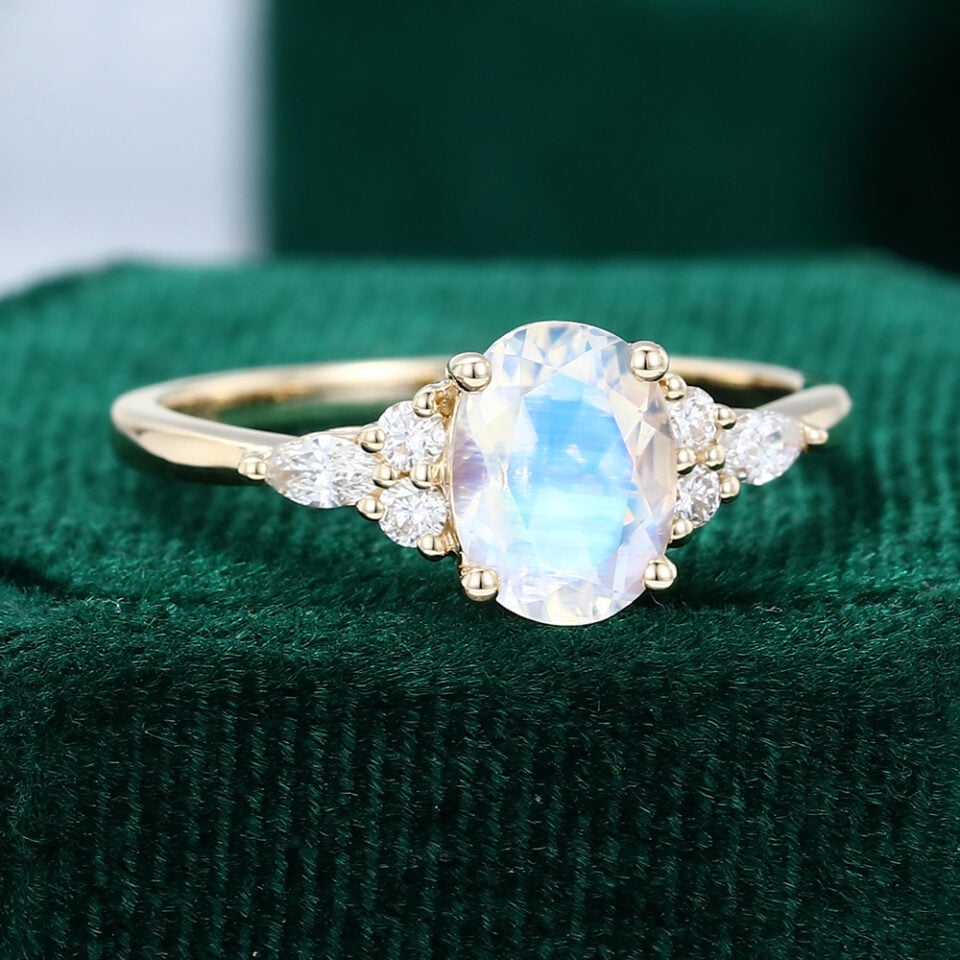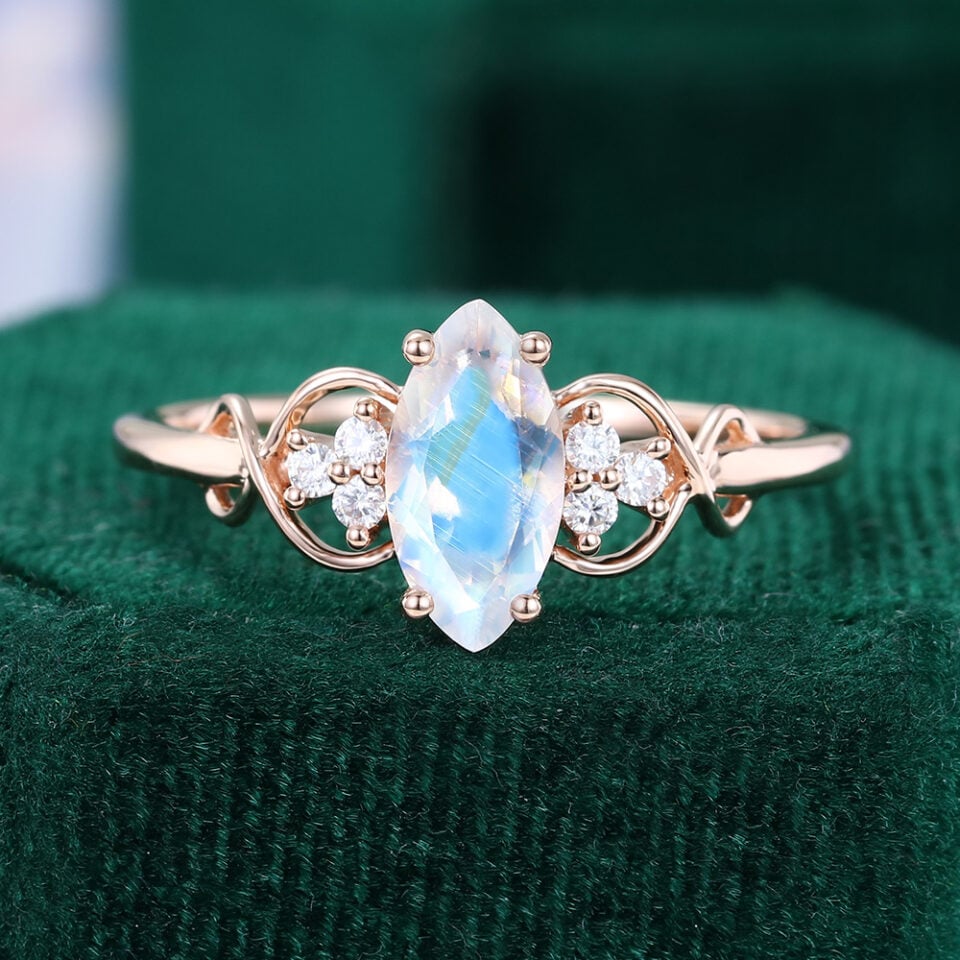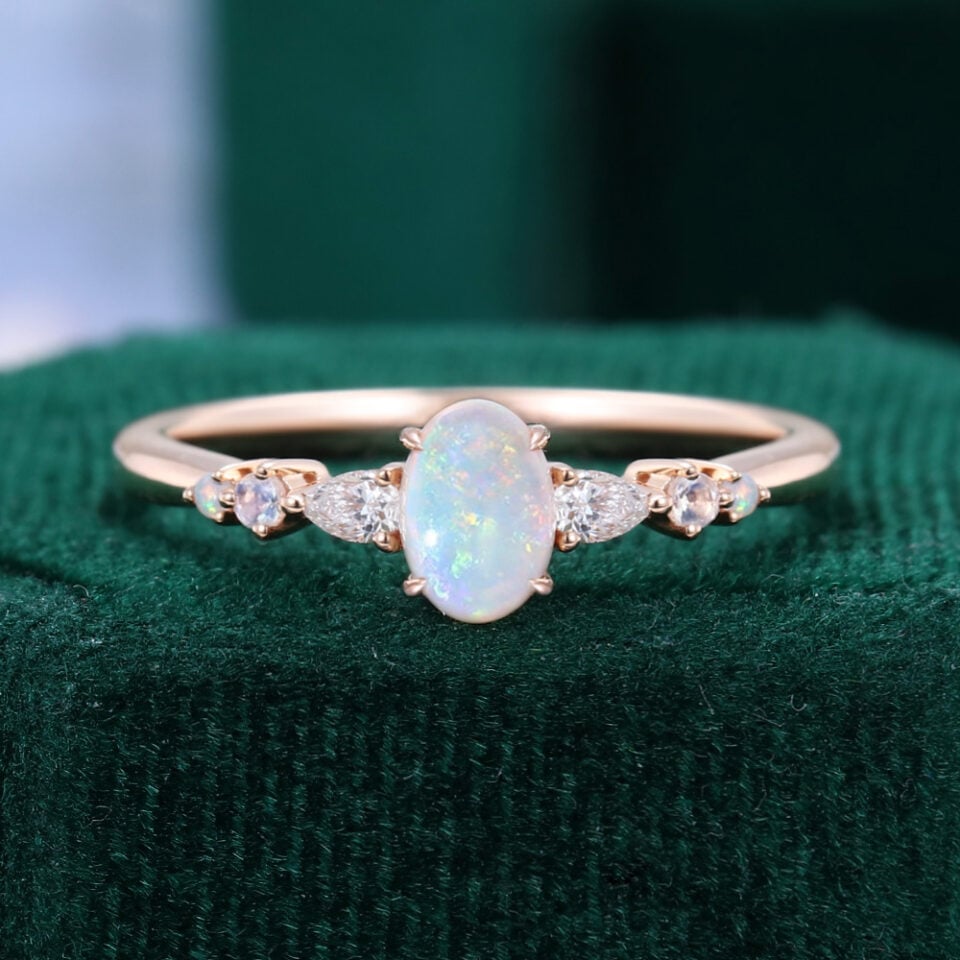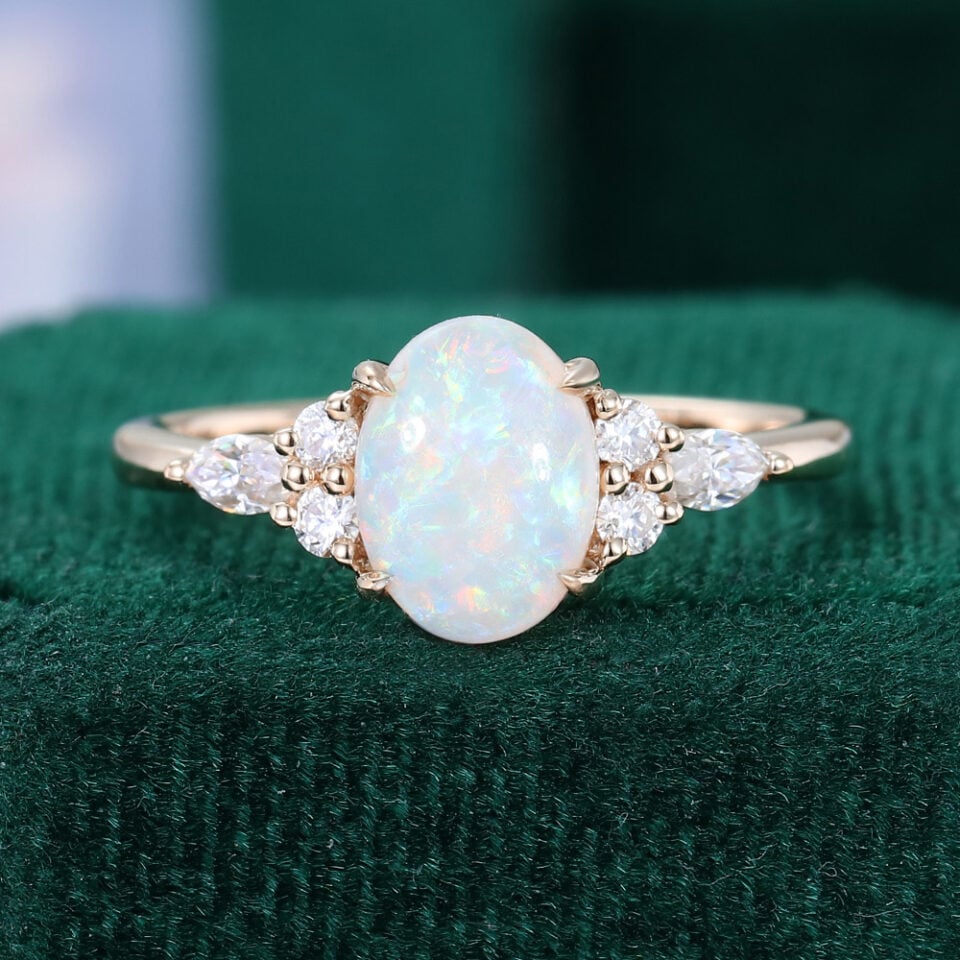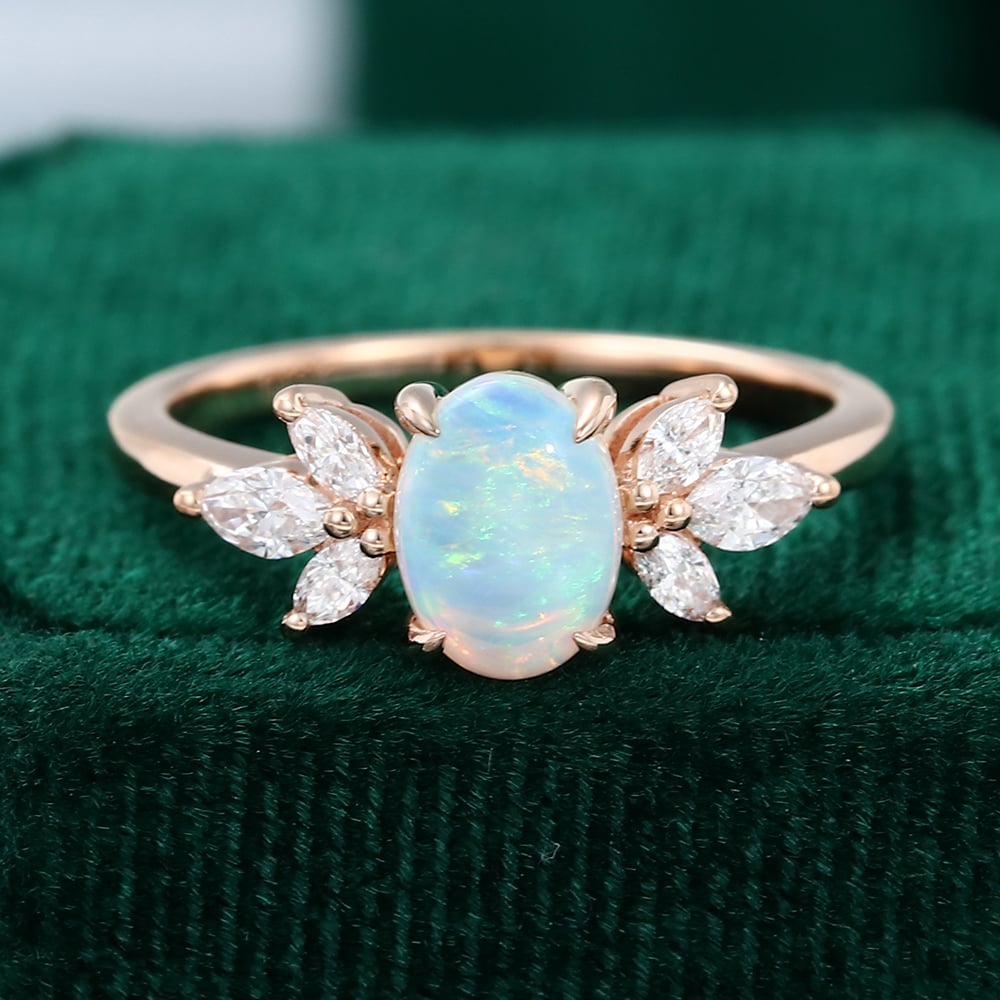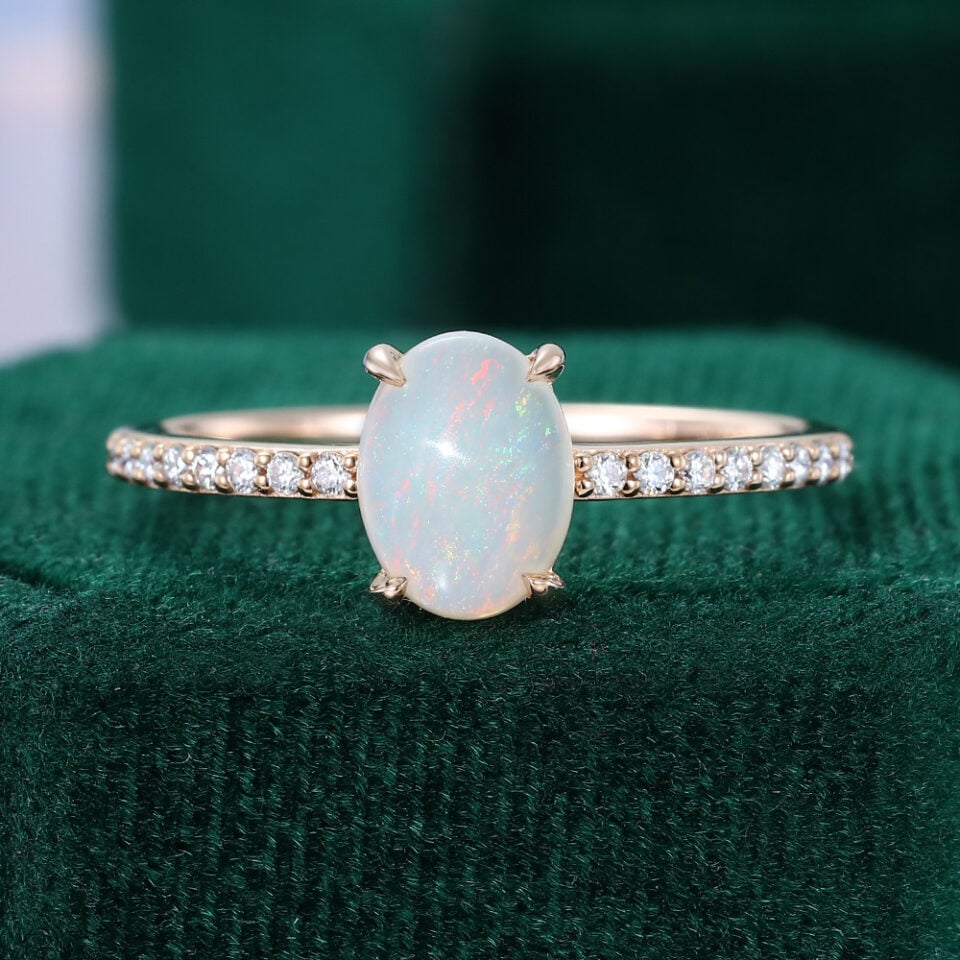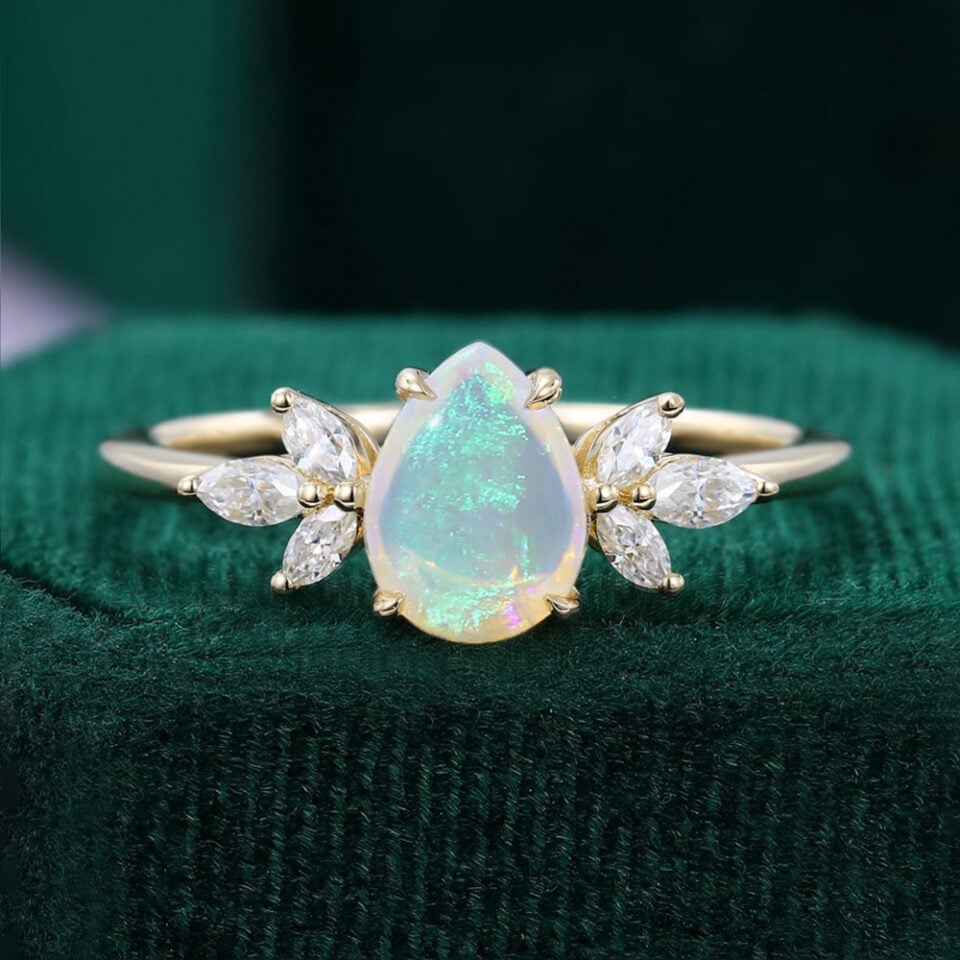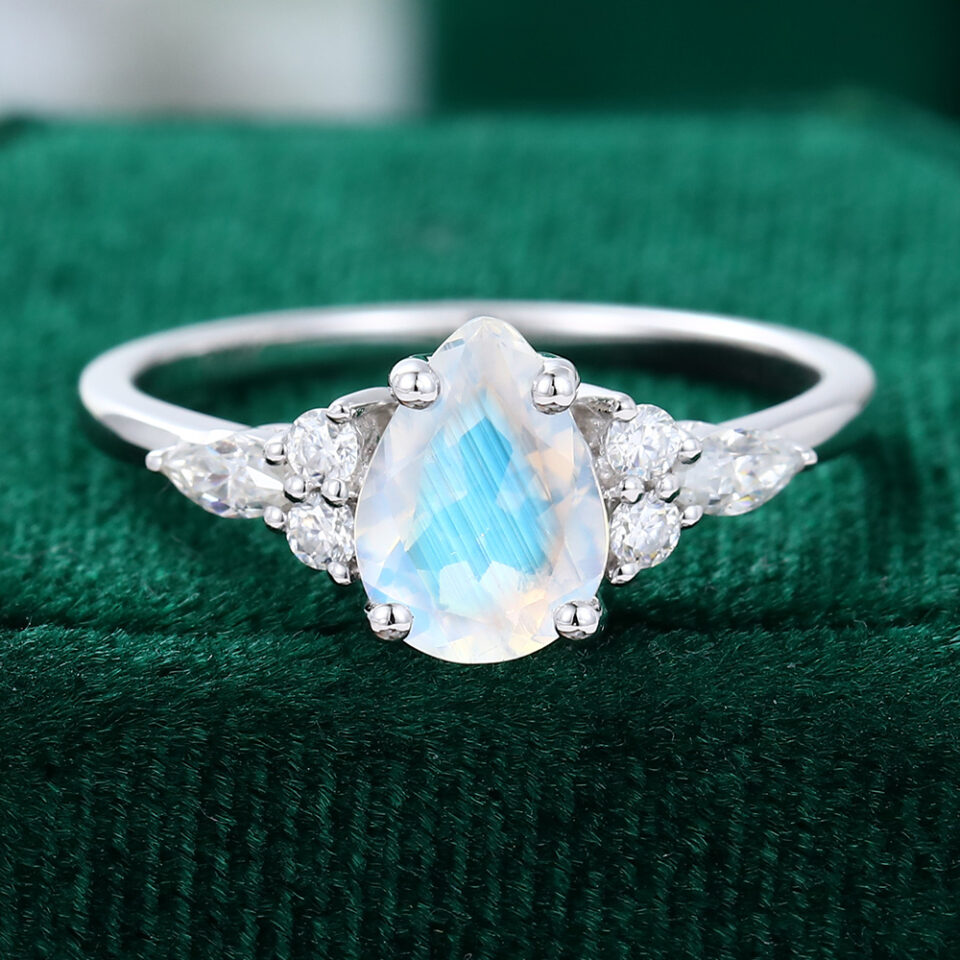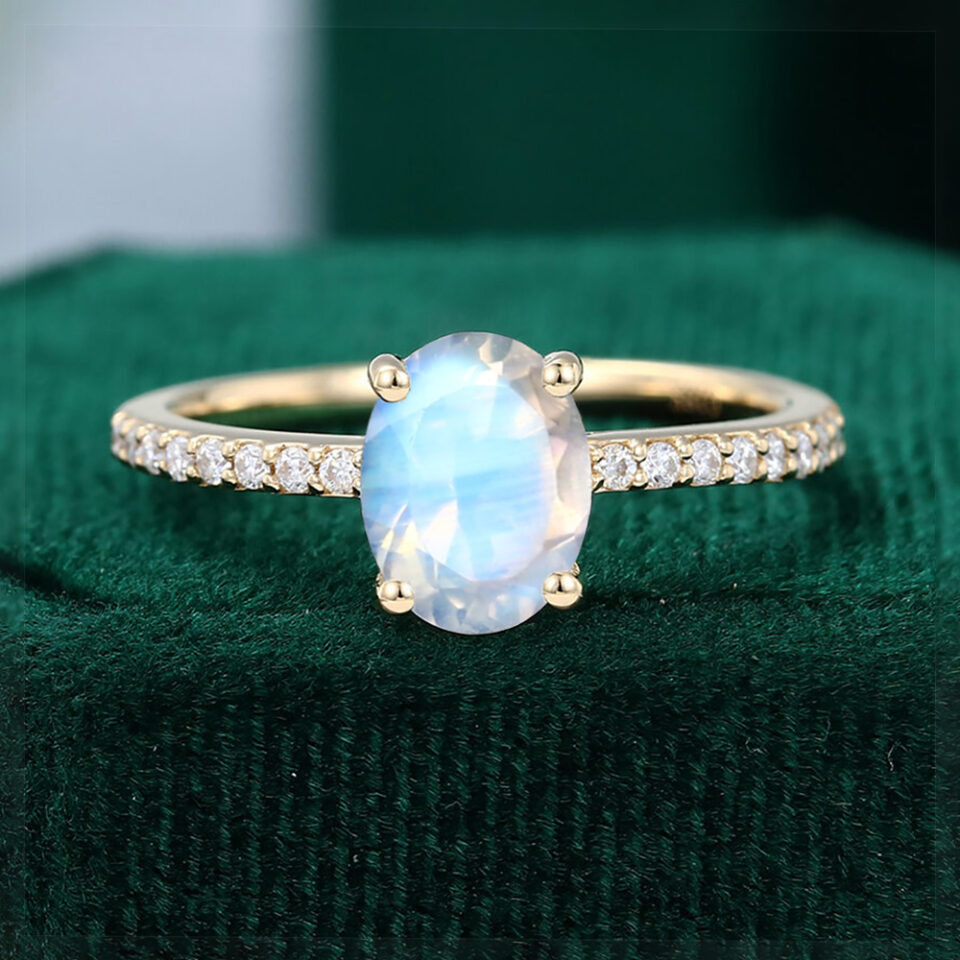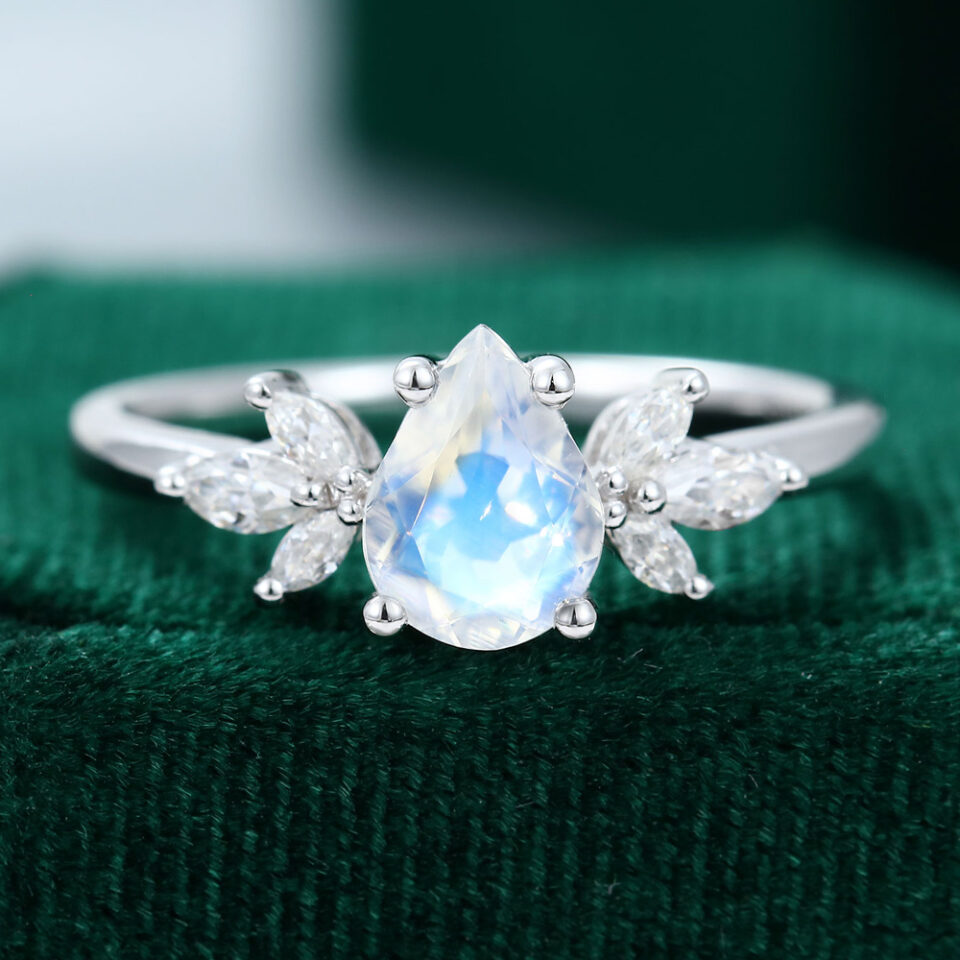- by MollyJewelryUS
- October 15, 2025
- Gemstone Guide
Stop. Before you buy that ring: The ultimate battle for ethereal beauty is here: Opal vs Moonstone. One stone captures a swirling galaxy of color; the other holds the calm, quiet light of the moon. The decision comes down to one simple question: Do you want a dazzling diva you must guard, or an easygoing classic you can live in? We break down the magic, the style, and the essential difference in maintenance to find your perfect signature stone.
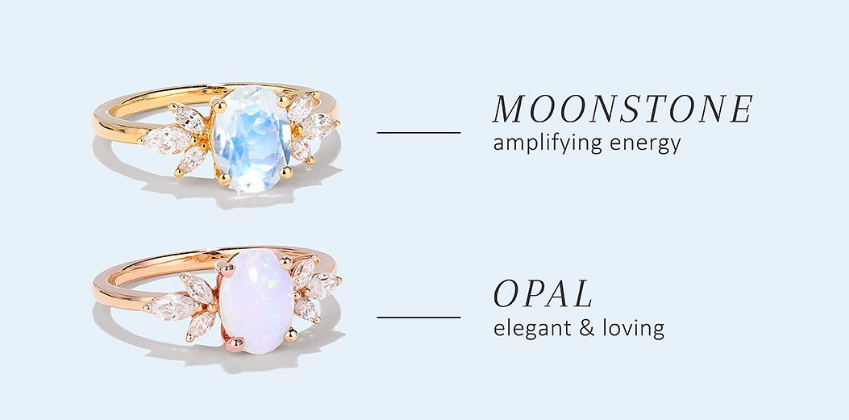
Table of Content
Table of Content
The Magic Factor: Appearance & Mood
The Magic Factor: Appearance & Mood
The biggest difference is how they shine. This affects the mood of jewelry and how much attention it draws.
| Feature | Opal: The Burst of Fire | Moonstone: The Gentle Whisper |
| Glow Effect | Play-of-Color: Explosive rainbow flashes that move and change constantly. | Adularescence: A soft, hazy, blue-white light that seems to float just under the surface. |
| Feeling / Vibe | Bold, Dramatic, Creative. A statement piece that demands attention. | Calm, Romantic, Intuitive. Subtle, elegant, and complements any look. |
| Best Used For | Statement opal rings,pendants (where it’s protected), or colorful earrings. | Everyday moonstone rings, stackable jewelry, and pieces meant for long-term wear |
Meaning & Mythology: The Stone's Story
Meaning & Mythology: The Stone's Story
The ancient beliefs associated with these stones offer a deeper, symbolic dimension to your choice.
Opal: Hope and Prophecy
Opal: Hope and Prophecy
- Origin of Name: From the Sanskrit Upala, meaning “precious stone,” reflecting its value and variety.
- Ancient Beliefs: Believed by Romans to be the “Queen of Gems,” containing the colors of all others. Historically associated with luck, hope, and prophecy.
- Modern Meaning: Symbolizes creativity, passion, and spontaneity. It encourages the release of inhibitions and amplifies emotions.
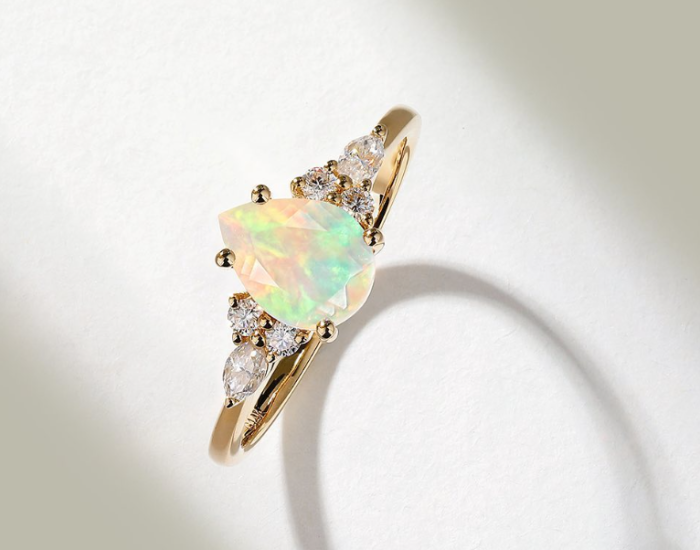
Moonstone: Intuition and New Beginnings
Moonstone: Intuition and New Beginnings
- Origin of Name: Named for its floating light effect, which resembles the glow of the moon.
- Ancient Beliefs: Linked to lunar deities; believed to be moonlight solidified.
- Modern Meaning: Symbolizes intuition, balance, and fertility. It is traditionally worn for protection while traveling, especially at night.
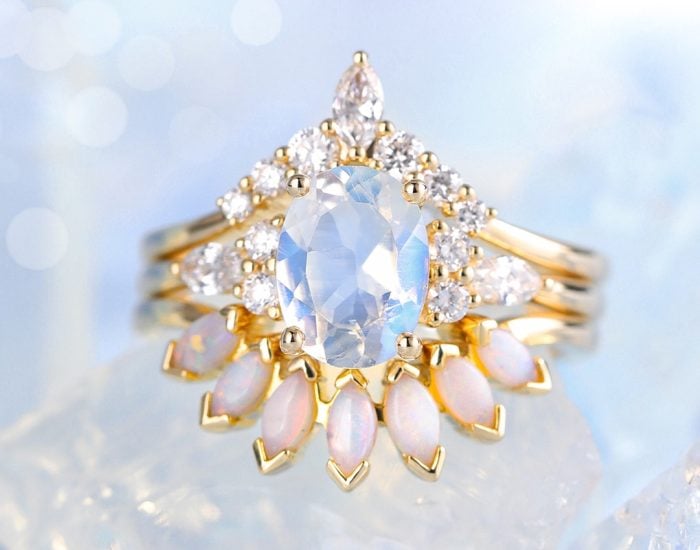
Daily Life Test: Hardness and Care
Daily Life Test: Hardness and Care
This is the most important section for consumers. One stone is surprisingly tough; the other requires genuine dedication.
| Test Category | Opal (Requires High Care) | Moonstone (Low Maintenance) |
| Scratch Resistance | Medium (5.5–6.5 Mohs). It’s relatively soft—easy to scratch if worn daily. | Medium-High (6.0–6.5 Mohs). Still needs care, but slightly harder and more durable than Opal. |
| Water / Heat Risk | EXTREME Risk. Opal has water inside. Heat or low humidity can cause it to crack (crazing). | Low Risk. This is a stable mineral. Safe for common temperature and humidity changes. |
| Cleaning | NEVER use ultrasonic or steam cleaners. Only use a soft cloth and mild soap. | Safe for mild soap and water. Avoid harsh chemicals. |
Quick Tip: If you tend to knock your hand or forget to remove jewelry before chores, Moonstone is the practical choice. Opal is a “special occasion” commitment. For full maintenance details, consult our Jewelry Care Guide.
Shape & Style: Best Cuts and Designs
Shape & Style: Best Cuts and Designs
The internal light effects and durability of these two gems demand specific cuts and protective settings to show off their beauty and ensure longevity.
Optimal Cuts and Shapes
Optimal Cuts and Shapes
- Ideal Cut (Both Gems): To maximize their unique light effects, both Opal and Moonstone are almost exclusively cut into a Cabochon—a smooth, domed surface without facets.
- Opal’s Shape Preference: Tends towards hexagon, oval, and pear shapes, often cut to maximize the precious color-bar within the rough stone.
- Moonstone’s Shape Preference: Typically cut into classic, symmetrical shapes like pear, oval, and marquise for balance and clarity.
Ideal Setting Styles
Ideal Setting Styles
| Setting Feature | Opal: Fragile Beauty | Moonstone: Versatile Elegance |
| Durability Requirement | Requires maximum edge protection due to its softness and water content. | Requires protection from impact, but is less demanding than Opal. |
| Best Setting Style | Art Deco, Vintage, Cluster/Halo. The Opal’s fragility is beautifully offset by ornate settings where metal provides robust protection. If you’re considering an opal engagement ring, a bezel setting is highly recommended. | Minimalist, Modern, Solitaire. The simple, soothing glow fits perfectly with sleek lines and clean, unadorned designs that let the stone speak for itself. |
Most Popular Opal & Moonstone Rings
Most Popular Opal & Moonstone Rings
The Price Tag: Value and Rarity
The Price Tag: Value and Rarity
The factors driving the market price of these two ethereal stones are distinct.
Opal: Price is driven by Color Quality and Origin
Opal: Price is driven by Color Quality and Origin
- Value Driver: Price is determined by the intensity and brilliance of its color flash against its body tone.
- Most Valuable:Black Opals (from Australia), which have the highest color contrast, can cost thousands per carat.
- Affordable Options: White opal or ethiopian opal are widely available, offering beauty without the investment of black opal. Don’t forget popular variants like pink opal rings.
Moonstone: Price is driven by the Blue Sheen and Origin
Moonstone: Price is driven by the Blue Sheen and Origin
- Value Driver: Price is determined by the clarity and strength of its adularescence (sheen).
- Most Valuable: The fine blue sheen moonstones (often called “Ceylon Moonstone” from Sri Lanka) are the priciest due to their distinct, rare blue glow.
- Affordable Options:Rainbow moonstone (Labradorite) from India, which offers a strong, colorful flash.
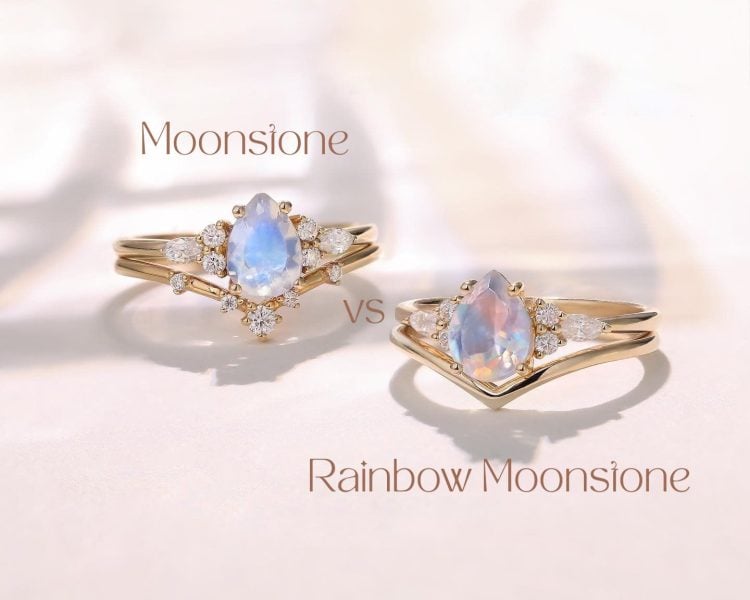
Which One Is Right For You?
Which One Is Right For You?
The final choice depends on your lifestyle and aesthetic commitment.
- Choose Opal if: Your style is artistic & expressive. It offers unmatched color variety and drama but requires dedication to care and embodies passion.
- Choose Moonstone if: Your style is elegant & minimalist. It offers timeless beauty, calming energy, and is a much easier daily wear. Symbolizes intuition and balance.
- Next Steps: Ready to commit to your signature stone? Explore our Custom Ring Guide to start designing, or check our Ring Size Guide to find your perfect fit.
Related FAQs
Related FAQs
Is Opal suitable for an everyday engagement ring?
Due to its softness (5.5–6.5 Mohs) and vulnerability to moisture/impact, Opal is considered a riskier choice than Moonstone for an engagement ring. If you choose an opal engagement ring, a highly protective setting like a full bezel is essential, and it should be removed before activities like washing dishes or gardening.
How should I properly store these gemstones?
Opal: Store it away from direct heat and very dry environments. For comprehensive storage and cleaning tips, check our Opal Jewelry Cleaning and Care Guide. Some experts suggest storing Opals in a soft cloth or padded box to protect them from impact and temperature fluctuations.
Moonstone: Store separately from harder stones (like diamonds or sapphires) to prevent scratching. It does not require special humidity control.
What is the difference between Rainbow Moonstone and Blue Sheen Moonstone?
Blue sheen moonstone (often from Sri Lanka) is true orthoclase feldspar and shows a gentle blue or white sheen (Adularescence). Rainbow moonstone (often from India) is technically a trade name for Labradorite. It displays a stronger, multi-colored flash (Labradorescence) and is generally more affordable and more durable than its blue-sheen counterpart. You can read a more detailed comparison here: Moonstone vs. Rainbow Moonstone Guide.
Can I wear my Moonstone in the shower?
While Moonstone is stable, prolonged exposure to soap residue can dull its surface shine over time. It’s always best practice to remove any gemstone jewelry, including your moonstone ring, before showering or swimming to maintain its brilliance.
